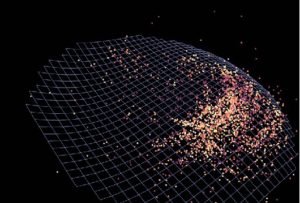
A complete Universe model
The busy life and the buildings of the big cities prevent us from seeing the starry night sky where you can count more than a thousand stars with the naked eye, and is the model of this universe already known.
sky where you can count more than a thousand stars with the naked eye, and is the model of this universe already known.
The whole that can be known hides a Whole that is all of creation and that had its Fiat or its Big Bang an initial moment and is gradually unveiled by research and the large telescopes built and that can now search beyond the Milky Way and many planets can be seen.
Even with all studies, what we know is only 5% of the composition of the universe, as shown by the figures of the Dark Energy Survey (DES), led by the American laboratory Fermilab, since 25% of the universe is dark matter and the remaining 70% are dark energy.
Since the first moment of the Big Bang, the universe has accelerated the pace of its expansion and the process has not slowed down, through the observation of a type of supernovae, end-of-life stars that collapse and emit an amount of brightness comparable to the center of the stars. galaxies, it is concluded that dark energy was the one that increases the speed of this growth process.
Dark matter, on the other hand, gets its name because it does not interact with photons (the particles of light, which are now definitely massless particles in the current model) and thus it is not possible to directly detect them through telescopes where the color and quality of the light makes them possible to be studied.
This dark matter is noted for its gravitational effect, that is, it has gravity and the visible bodies interact with it, and although we know that it exists, studies on the phenomena that happen to them and their interaction with other celestial bodies only started, studying their shapes and the distortions that cause their gravitational fields, which gives some information.
The study that covered approximately 300 million galaxies, 100,000 clusters and 2,000 supernovae, in addition to objects from our Milky Way and the Solar System.
In 2016 a detailed map of 43.00 galaxies was published reaching a distance of 380 million light years from the solar system, called the 2MASS Reshift Survey (2MRS) was presented at 218º. American Astronomy Society meeting in Boston, USA.
The Gaia satellite launched in 2013 by the European Special Agency (ESA) completed in 2018 its mission to register the stars and make a 3D map of the Milky Way (photo above), but the result according to Leah Crane, an astronomy expert was “The universe just got even more confused,” he wrote in the new Scientist magazine.










